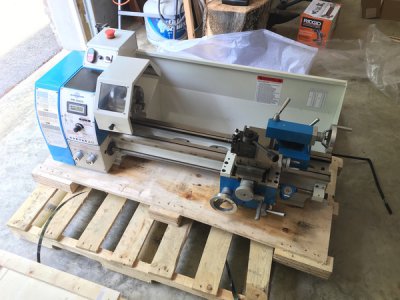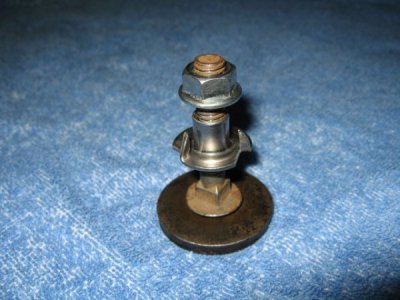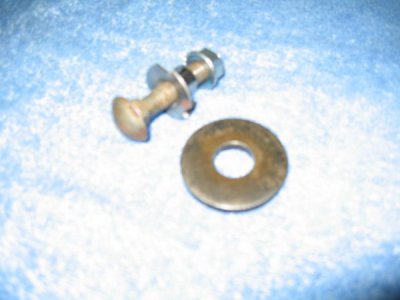- Joined
- May 17, 2016
- Messages
- 13
Excellent point! I should have taken photos of the process I used for making adjustable feet for the last plywood constructed machine stand I made. That was for a radial arm saw that needed to be not only stable, but perfectly in-line with the miter saw station immediately next to it. Their fences are inline and tables coplanar, so adjustable feet were critical.
I used 3/8" bolts, of which I have a tremendous number due to a bulk purchase from a closeout place for next to nothing a couple years ago. I have bolts of different lengths, regular and jam nuts, couplers, bushings, etc., all in 3/8"-16, so the choice of hardware was obvious for me. Fortunately the couplers are 9/16" at their narrowest point (designed for that size wrench), which is a nice fit within 3/4" plywood. I drilled a 1/2" hole with a forstner bit into the plywood, then used a simple jig with a 1/2"-3/8" bushing, a bolt, and a coupler to align the coupler with the hole, traced the shape of the coupler with a marking knife, then chiseled out the hexagonal shape very quickly. Couldn't be much easier.
I used four 3/4" plywood pucks, about 3" in diameter, with 3/4" diameter depressions drilled into the center, 1/4" deep, to receive the head of the bolt that I put in each adjustable foot assembly. That conforms slightly to the irregular surface of my shop floor, distributes the load from the cabinet/stand, and leaves just enough of the head of the bolt exposed to fit a wrench for adjustments. When the level is set a nut (spun on before assembly) is tightened against the coupler above, which is held stationary in its plywood home. It took about an hour to do all the cutting, drilling, chiseling, and assembly, and no more than 10 minutes to level it.
Yes, definitely plan to incorporate some leveling feet I have lying around. I do a ton of woodworking so this should be a simple enough build for me. Hoping to knock it out this long weekend and get the lathe up and running.




